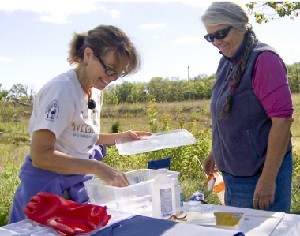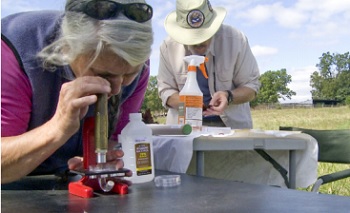Volunteers keep an eye on the watershed’s “creepy crawlies” to monitor stream health

Clarke County’s Spout Run watershed has the potential to provide clean water and support a large variety of wildlife species. Yet, the stream is on the State Impaired Waters List due to nutrient and sediment levels from fertilizers, livestock and other human-related activities. This is bad news not only for the wildlife and people living around the watershed, but also for communities downstream—including the Chesapeake Bay.
So, PEC’s been busy working with a host of partners and citizens in a community-based effort to clean up the Spout Run watershed. As a part of this effort, PEC’s Gem Bingol launched a volunteer stream monitoring program this year.
Monitoring the macroinvertebrates in the stream will help determine whether the cleanup efforts are working in Spout Run.
Meet Lisa—A volunteer Spout Run stream monitor

“It’s fun to get outside and see what’s in the creek…You don’t realize what’s going on in the water until you start poking around and find all of these interesting critters… I think water quality is really important, and so it’s important to monitor to get an idea of what’s going on in the creeks.”
Stream monitoring is just one of the ways that PEC and our partners—Clarke County, The Downstream Project, Friends of the Shenandoah, Trout Unlimited, Lord Fairfax Soil & Water Conservation District, Blandy State Arboretum, Master Naturalists, and Powhatan School—are working to clean up Spout Run.
For more information about monitoring trainings, or other activities going on in the Spout Run watershed, contact Gem Bingol—PEC’s Land Use Field Officer in Clarke: gbingol@pecva.org or (703) 431-6941.
This article was featured in our Winter 2013 Member Newsletter, The Piedmont View.
